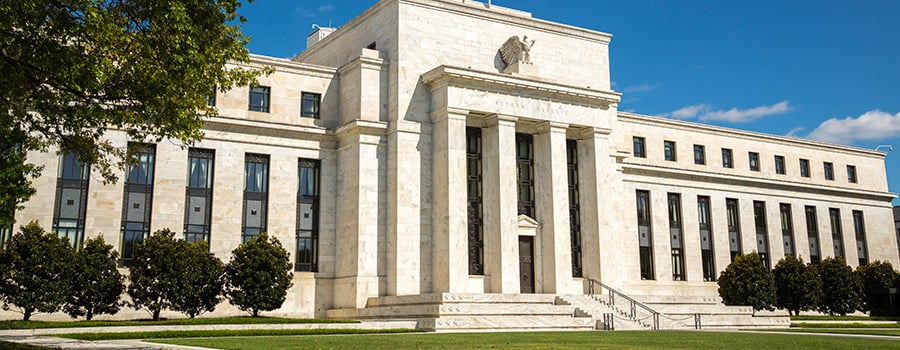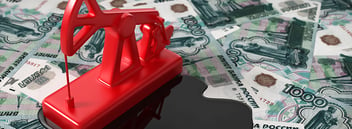
The Federal Reserve's Federal Open Market Committee (FOMC) usually convenes at eight regularly scheduled meetings per year, laying out US monetary policy for the months ahead. The session on 16-17 March 2021 is of particular importance, as the first of its kind since House approval of the latest US fiscal stimulus package under the Biden administration.
Recent developments have reasserted the importance of interest rates as a majorly influence on exchange rate fluctuations. At the end of February, the US Treasury auction for a seven-year government bond was badly received by the bond market, with investors demanding a higher yield than anticipated. This triggered an upward shift in the whole yield curve. The effect observed is that of rates rising over the whole yield curve, from 2- to 30-year tenors.
For currency investors, a currency with a higher interest rate, or even the prospect of a higher interest rate, is favoured over a lower-yielding currency. Historically, when the interest rate differential between the US dollar (USD) and the euro (EUR) hovered either around or above 2% in favour of the USD, a bullish long-term trend for the USD (when looking at longer periods) was observed in almost all cases.
When we look at the EUR versus the USD at the moment, the differences in yield are increasing rapidly. But what is causing them?
Fed policy at a glance
The main goals of the US Federal Reserve (the Fed) are to achieve full employment and keep inflation under control. However, given the prevailing circumstances, the Federal Open Market Committee has already mentioned that a temporary overshoot in inflation would be acceptable at this moment in time. In addition, last week, the Fed proclaimed that the US still has a long way to go before full employment can be attained. For the markets, this is a sign that the Fed seems to consider that current conditions are still accommodative, allowing the economy to recover.
The Fed recently stated that increasing long-term interest rates is a sign of trust in the US economy, but investors will carefully analyse each word uttered at the FOMC’s press conference, seeking out hints pointing towards future interest rate policy decisions. The approval of the $1.9-trillion stimulus package under the Biden administration has had a positive impact on economic outlook, but it has also led to expectations of rising inflation. This will cause a flood of liquidity, not only in the US, but spilling over to the rest of the world too, with a stimulating effect for many economies.
Striking a balance
The challenge for the Fed is to find a balance between much of the world’s optimistic economic prospects (as countries tentatively emerge from the pandemic crisis), rising yields and a financial market addicted to a low interest rate environment. Many market participants are surprised the Fed is not pushing back on rising yields. Any major market changes that develop too rapidly will ultimately create difficulties for the Fed, as they need to adequately respond in order to prevent markets from derailing. For example, if long-term interest rates continue to rapidly increase, it could trigger a sell-off on the stock markets. This could cause a lull in market sentiment, reducing consumer spending and endangering economic recovery.
The Fed has the latest economic figures at its disposal and the market expects economic growth figures and employment figures to show positive signs. Though difficult to predict, it is expected that the Fed will remain dovish (no increase of interest rates and very limited additional bond buying) and that the yield curve will steepen slightly further. The Fed is likely to closely monitor developments and not intervene quite as fast, maintaining the possibility of bond buybacks to reduce yields.
Potential outcomes
Dovish Fed
If the Fed adopts a dovish stance, it risks increasing yields that favour the USD over the EUR. Looking to the recent past, raising USD yields leads to an appreciation of the USD.
Hawkish Fed
A hawkish stance would see the Fed moving towards future interest rate increases and potentially increasing bond buybacks. This situation would probably lead to lower future inflation rates. Interest rate differentials between the USD and the EUR would also be lower, causing a limited reaction, but one opposite to that mentioned above.
Topics






